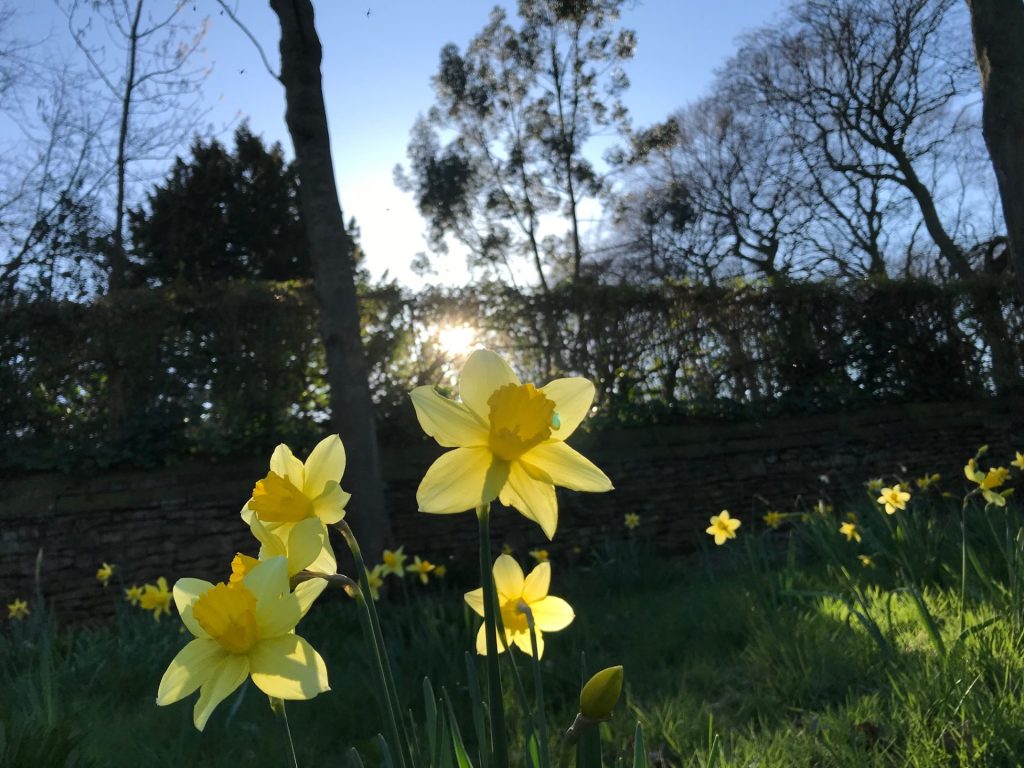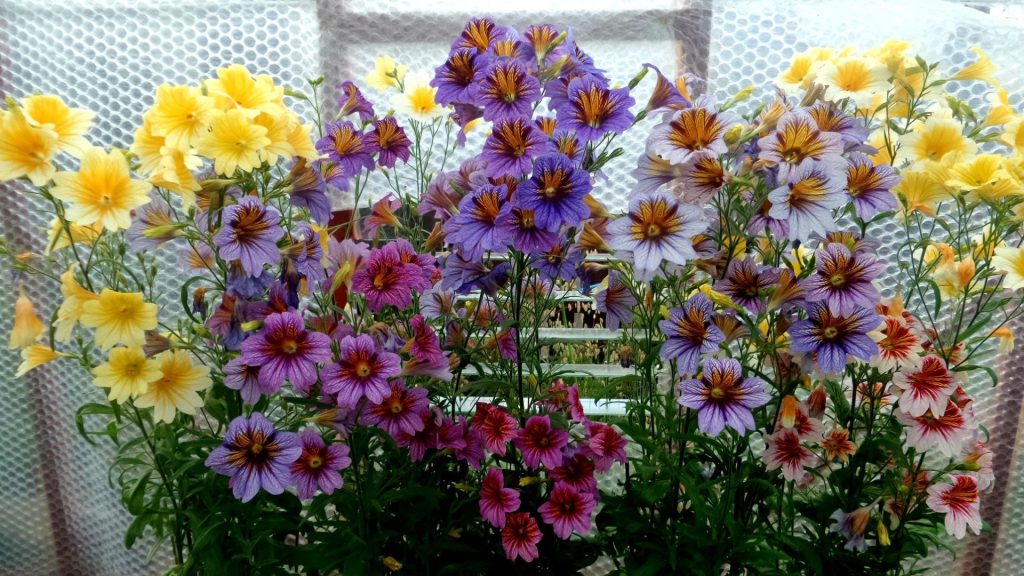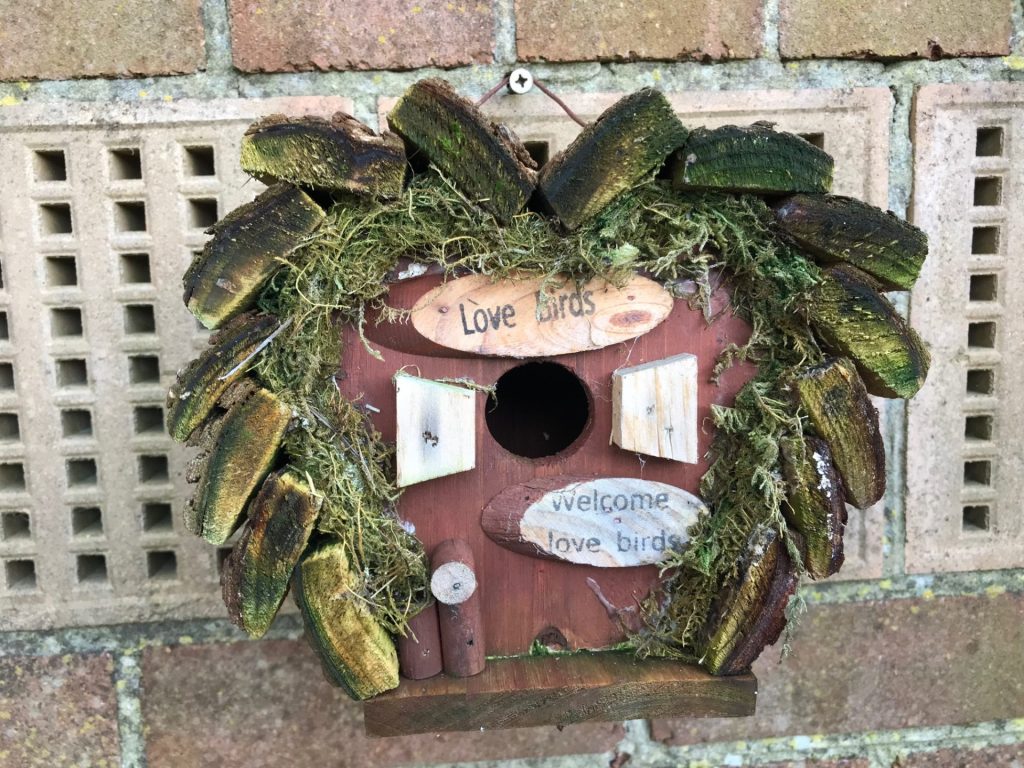By Gordon the Gardener
I wandered lonely as a Cloud
That floats on high o’er Vales and Hills,
When all at once I saw a crowd,
A host of golden Daffodils;
Beside the Lake, beneath the trees,
Fluttering and dancing in the breeze.
William Wordsworth with his famous poem gives us hope that February is when early flowering daffodils tell us spring is on the way. Light levels are increasing and there is hope of things to come.
In folklaw, it is said, if the weather is fine and frosty at the beginning of February, there is more winter ahead than behind.
“When the cat lies in the sun in February, she will creep behind the stove in March.”
But checking my 2021 diary temperature figures, I wouldn’t say February was all that warm and, of course, we had snow in April. So perhaps the cat just likes the heat of the stove anyway!

Seed potatoes are now on sale and can be started into growth by replacing them rose side up (where the growth eyes are) in a seed tray or in egg boxes.
Seeds of many kinds can be sown such as onions, aubergines and tomatoes. A favourite onion of mine is Red Barron which is an excellent keeper.
Alicante is a very good cordon grown tomato. Cordon means trained to grow upwards. Gardeners Delight is very good cherry tomato for salad. It is suitable to be grown in pots and containers.
Tomatoes require to be watered regularly once they start flowering. Don’t overwater. But if they are allowed to dry out, it can cause problems of splitting of the fruits.
If they do dry out don’t rush for the watering can and drench them. Apply a little bit water at a time over several hours until the foliage hydrates.
But it is best to put the plants in a reasonably large container so their roots can find moisture.
A good way is to plant them in big pots of John Innes compost and place these pots on top of good quality grow bags. The tomato roots can then run into the grow bag.
Watering the bag as the plants mature will ensure they are less likely to dry out. A good liquid tomato feed will also ensure a good crop.
READ MORE: Gordon the Gardener writes every month for Huddersfield Hub. Catch up on his blogs HERE
Greenhouse ventilation is as important as heat and good hygiene. The amount of ventilation again depends on the weather conditions.
For instance in cold or damp winter weather, only a little ventilation should be given. But on warm dry sunny days in winter then the ventilators can be opened wider. As spring days appear then full ventilation can be given, including opening the doors wide.
The same principle applies in autumn. I once was asked to visit a new chrysanthemum grower’s greenhouse.
He asked why his flowers were rotting. He had all the ventilators closed. He said thought he had to keep them warm. Yes, I said, but all plants need as much air as it’s safe to allow. He didn’t know. It was as simple as that.

Schizanthus can be sown for a summer display. Salpiglossis are another much neglected, but spectacular, pot plant which produces bell like flowers of rainbow colouring.
Sweet Peas can be sown along with anthurium, rudbeckia and salvia.
Pruning can be finally done of mahonia japonica towards the end of the month, after flowering. Evergreens can also be lightly pruned. Cornus, red and green, commonly known as Dogwood, can now he cut hard back to the ground. Their bright stems will regrow for next winter’s show.
February is a time when moving shrubs and other plants can be done. Try not to damage their roots and retain as much root as you can. Cultivate the new site and fork over the bottom of the planting hole, incorporating some manure. This will give the plant a good start.
Snowdrops are some of the earliest bulbs to flower. They are best bought and planted ‘in the green’ in other words with their foliage still green.
Towards the middle of the month dahlia tubers can be started into growth by placing in boxes of John Innes No1 potting compost. Placed on the propagator they will produce cuttings to be rooted in March.
If you’re planning to sow a new lawn, now is a good time to prepare the ground. Leave diggings rough to allow jack frost to break the soil down, which makes the land easier to cultivate when sowing your grass seed in April.
But avoid working the land if very wet, as working wet soil can damage the soil’s structure.

Now is also a good time to put up a nest box for the birds. Site it out of the prevailing wind and strong sun. I know blue tit boxes are popular but there are many different types of boxes for different birds from owls to robins.
Robins will nest in an upturned old kettle placed about 4ft from the ground facing north east inside a climbing plant or thick vegetation.
“Look deep into nature, and then you will understand everything better.” Einstein.


















